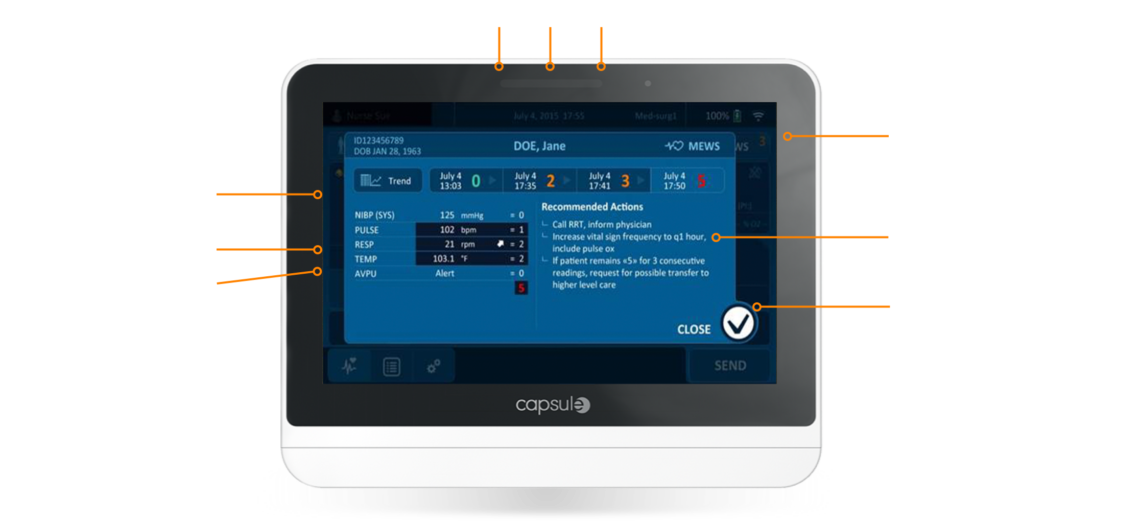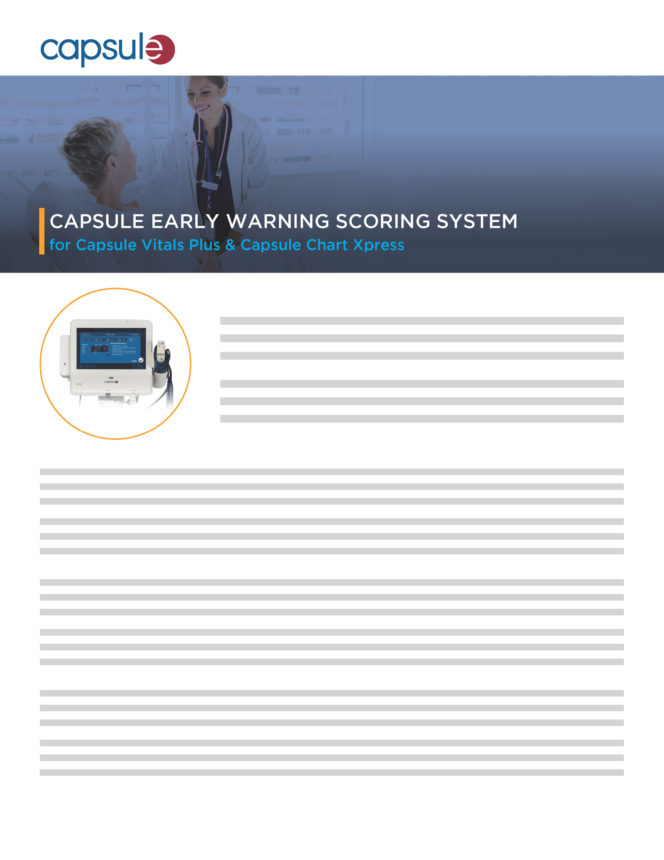Une détection précoce peut faire la différence entre la vie et la mort.
Les patients présentent généralement des signes de détérioration 8 à 12 heures avant un événement critique.1 Désormais, vous pouvez vous assurer que les premiers signes de détérioration sont détectés et que vos équipes soignantes savent comment réagir. Conçu pour compléter le système d'alerte précoce (EWSS) de votre DME, notre système utilise des systèmes de notation et des interventions configurés par l'hôpital pour identifier les patients à risque et guider les équipes soignantes au chevet du patient. Ce module complémentaire optionnel à Capsule Vitals Plus ou Chart Xpress* est un outil idéal pour les services de soins non critiques.


